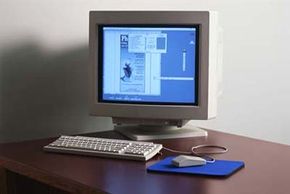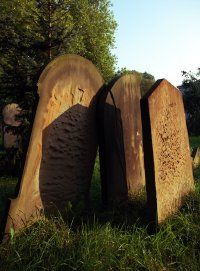Here is a list of terms that you may encounter on your genealogy journey.
Abstract: the recording of pertinent facts from a given record.
Ancestors: those individuals from whom you descend -- your parents, grandparents, great-grandparents, and so on.
Ancestral file: a lineage-linked database of families submitted by fellow researchers and available online to search at the FamilySearch Web site (www.familysearch.org).
Census: the enumeration of the population by the government. Used to, among other things, adjust boundaries or representation in the government; identify the number of citizens who may be used in fighting; determine the number of immigrants to the country.
City directory: the precursor to phone books. An alphabetical listing of inhabitants of a city in a given year, supplying the addresses of individuals, providing meeting information about various organizations and churches, and identifying businesses in the community.
Civil registration: the records of births, marriages, and deaths (more commonly referred to as vital records).
DAR: Daughters of the American Revolution, a lineage society that requires proof of descent from an ancestor who either fought for or gave aid to the Colonial army during the American Revolution.
Derivative source: any source or record that is not an original source; that is, anything that has been compiled, copied, or abstracted and is being used as a source.
Descendants: those individuals who descend from someone. You are your parents' descendant; your children and grandchildren are your descendants.
End-of-line ancestor: the last individual of a given line you have been able to identify.
Family group record: the chart or form that allows you to record information about a single family unit, which includes the father, mother, and children.
(FHC): a local branch of the Family History Library in Salt Lake City, Utah. Provides access to more than two million reels of microfilmed records. Look in the yellow pages under Latter-day Saints (Mormons) or Church of Jesus Christ of Latter-day Saints to find your local FHC, or use the "Find a Center" link at the FamilySearch Web site (www.familysearch.org).
Family tradition: in family history, the stories and traditions passed down from generation to generation.
Gazetteer: a dictionary for places. Supplies details such as the county in which a town is located, the names of nearby towns and rivers, and sometimes the population of the town at the time of publication.
GEDCOM: acronym for GEnea-logical Data COMmunication, a method of transferring information from one genealogy program into another without having to reenter it manually.
Genealogy: the recording of the ancestry or descendants of a certain individual.
records: land records generated when an individual received land, usually 160 acres, under the Homestead Act of 1862.
Inscription: refers to the information that appears on a tombstone, ranging from the deceased's name and year of death to elaborate biographical information including date and place of birth, organizations to which the person belonged, name of parents, and more.
Interpretation of records: the inferences and assumptions based on the records found.
Land platting: a graphical representation of the land description found in a land deed or patent.
NGSQ style: a narrative-style genealogy report used by the National Genealogical Society Quarterly. Adheres to a numbering system that assigns a consecutive number to each individual and identifies the descendants who had issue (had children) by adding a plus mark (+) next to their number.
Lineage-linked: refers to genealogy databases in which the individuals are connected through family relationships and can be displayed in pedigrees and family groups.
Manuscript: any group of papers with a common theme or topic compiled by or created around an individual or family. May include letters, diaries, and other private papers or notes.
Original source: a source created at or near the time of the event by someone who was present or knowledgeable about the event.
Parish: a term used to describe either an ecclesiastical (church) or civil government division. Also, in the state of Louisiana, counties are referred to as parishes.
Pedigree chart: a chart that has been referred to as the road map of your ancestry. Also known as the family tree, as each new generation adds more branches to the chart.
PERSI: acronym for the PERiodical Source Index, compiled by the Allen County Public Library in Fort Wayne, Indiana, and indexing periodicals that contain genealogical information.
Primary information: written or oral information supplied by someone who was present at the event in question, either as a participant or as an eyewitness.
Presidential libraries: those libraries established to preserve the papers of past presidents of the United States after they leave office, beginning with the 31st president, Herbert Hoover, and continuing to the present.
Register style: a narrative-style genealogy report that adheres to a numbering system in which each descendant of the primary individual is assigned a consecutive number; children are assigned lowercase Roman numerals as well as Arabic numbers.
Repository: any building that holds records or resources for safekeeping. Includes archives, libraries, museums, society buildings, and businesses.
Research log: a chart or method of tracking research, including the research you have already acquired and that which you intend to obtain.
SASE: a self-addressed, stamped envelope, which researchers should include any time they contact a repository, family member, or fellow researcher via postal mail with a request that they respond.
Secondary information: any statements, written or oral, from a person who was not present at the event in question. Includes family traditions and stories along with many other types of information.
Soundex: an index based on phonetics, with consonants being assigned one of six numbers, and the surname being converted to a four-character code.
Source citation: a notation that identifies the exact location of the information you are including on a family group sheet or in a genealogy program database. Can include, but is not limited to, books; land, census, or vital records; tombstones; newspapers.
Vital records: certificates recorded by civil authorities to identify births, marriages, and deaths (also known as civil registration).
Throughout this article, we've stressed the importance of keeping track of your genealogical research. The next page has free charts that can help you organize and record the family history data you've uncovered.
To learn more about building a genealogy, see Genealogy Websites.




